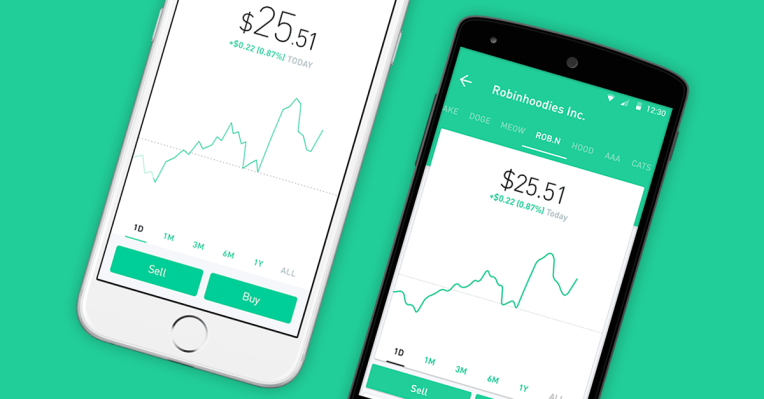From Composable Experiences to Composable Enterprises
In a world where tech and accessibility are all-pervasive, enterprises recognize “customer experience” as the real brand differentiator. In particular, the digital face of the brand. Whether it be an employee onboarding app, new account creation for banking, a...

In a world where tech and accessibility are all-pervasive, enterprises recognize “customer experience” as the real brand differentiator. In particular, the digital face of the brand. Whether it be an employee onboarding app, new account creation for banking, a consumer online banking app, or an e-commerce platform, today’s users demand meaningful, relevant, frictionless, contextual, and personalized experiences.
Customer Experience as a Data Point
PwC’s report “Driving growth through experiences methodology” quotes that customers with a high-quality experience are 2.7 times more likely to keep doing business with a brand. Sixty-six percent of consumers are willing to pay more for a great experience.
Customers expect nothing short of excellent digital experiences from their brands, so much so that “customer experience” will overtake price and product to become the key differentiator for consumers.
Since customer experience is one of the most important drivers of growth, organizations are shifting their focus to innovation. They are bringing experience-building as its core principle of app development.
However, experience is not just limited to customers. Great employee experience promotes greater customer experience, and therefore there is an increased need to dwell on building better internal tools. These tools can promote better services and enhanced products to its customers across all channels and interactive touchpoints.
Composability is one such approach to software development that enables enterprises to accelerate their time-to-market while also enabling enterprises to innovate and create differentiated experiences faster. The premise is that user experience is a composition of several other functionalities that can be assembled together to create a unified experience for the user.
Need for Composability in Enterprises
In this software development paradigm, an enterprise’s software architecture can be imagined as a collection of autonomous, independent, and API-driven Packaged Business Capabilities(PBCs) that can be assembled together to build any application.
Composability brings the benefits of modularity and autonomy to change functionalities without disrupting the business. It allows for innovation by enabling the orchestration of disparate capabilities and encourages deeper collaboration among stakeholders.
The ability to “compose” applications vis-a-vis the traditional ‘build’ provides the much-needed acceleration that enterprises require to take their differentiated experiences to market quickly.
The next generation of enterprises will focus on composable architectures and invest heavily in approaches that will be the foundation for becoming a composable enterprise, such as
Being API-first and Microservices-enabled Transition to a component-based delivery with a developer-first approach Building highly customized and personalized experiencesComposable Experiences: The Future of Enterprise Applications
Enterprises that can deliver bespoke experiences at the right time and right place are the ones that can differentiate their applications in the market. The speed at which these applications can be brought to market plays a pivotal role in the application’s success. But speed requires the right tools, the right methodologies, and the right approach to software development.
Given the demands of speed, imagine a scenario where developers can pick and choose building blocks that abstract entire user journeys. These building blocks can then be chosen from an internal marketplace or CX ecosystem and assembled together to create any kind of application.
In addition to the acceleration that this methodology provides, it also ensures consistency, flexibility, and the ability to enable unique experiences for the customer at the right touchpoint. Experiences abstracted as components on top of orchestrated APIs enable enterprises to bring best-of-breed capabilities together and provide differentiated, cohesive, and unified user experiences.
A few developer-centric low-code platforms offer component-based delivery and have the unique advantage of not just being the right platform for accelerated development but also creating a ‘development paradigm’ different from traditional methodologies that can yield results faster and better.
Composing Experiences on Low-code
Highly integrable and customizable low-code platforms with built-in accelerators are ideal platforms for building composable experiences.
Low-code platforms provide IT teams with a governed, sanctioned, sandboxed development environment to create experience components that can be plugged into any application at any point in time.
For low-code platforms to become composable experience platforms, they need to cater to vital traits such as these:
#1 Support Microservices and be API-first
The distinct separation of concerns between departments and functions within an enterprise should also reflect in its digital products. Autonomous delivery of services and products aids composability. Microservices—distinct and independent—enable applications to rely on individual units of functionalities that can be integrated together to create a cohesive experience. Low-code platforms that use microservices as their foundation are better suited to embrace composability.
Large enterprises over the years have invested in digital infrastructure that serves both customers, as well as business needs. Many of these digital assets provide valuable but disparate experiences. Enterprises can decouple the user experience from the backend by exposing these experiences as consumable APIs.
Being API-first and allowing seamless integration of APIs allows experiences to be built with speed. Pre-integrated components built on top of a purpose-specific combination of APIs can leverage existing functionalities from within the digital cores, to create compelling and modern user experiences.
#2 Cloud-native Delivery
The world has moved to the cloud. Any organization’s digital transformation story is incomplete without its chapter on cloud nativity. Enterprises are increasingly looking at creating applications on platforms that can deliver on the cloud. Low-code platforms that are cloud-native can deliver faster and enable seamless and accelerated updates to their applications in an agile environment.
#3 Component-driven Development
The traditional method of development is not viable when it comes to delivering modern and cloud-native experiences. Today, a wholesome experience is a collection of individual functionalities that are brought together and interwoven seamlessly and faultlessly.
Much like building structures with LegoTM blocks, today’s applications are built by assembling components that are stored in an internal marketplace within the enterprise—each component catering to a specific need in the user journey.
Enterprises must build a low-code-based methodology around this strategy to reap rich benefits.
Not Developers — but Builders & Composers
In this paradigm shift of development, ‘builders’ are the developers or original creators of experience components in an enterprise. They are typically spearheaded by an enterprise architecture group that oversees the technology needs across the enterprise. The builders work in collaboration with multiple business teams and streamline technology decisions too.
In contrast, composers are application developers who work closely with business teams in building the products or services that are delivered to the customers.
The composers have the privilege of picking and choosing the components created by the builders, and quickly assembling, customizing, and configuring applications based on the customer’s need, gaining not just speed to market, but also enabling quick and relevant innovation.
Low-code platforms that allow easy componentization over integrated APIs cater to both builders and composers. By creating teams of builders and composers around low-code platforms, enterprises can accelerate their journey toward experience development by using a two-phased approach to development.
Abstract Experiences. Promote Product Thinking
The key to creating composable experiences and in that composable applications is to treat each component as a product. This kind of approach promotes product design within teams. When components evolve like internal products, they can be consumed by various business teams in building their own products.
For instance, imagine building an employee onboarding application with enterprise-specific workflows for new employees. Let’s say the enterprise is moving from Peoplesoft to Workday. This change creates an enterprise-wide impact and changes the employee experience drastically. Which means there is latency and catch-up time involved.
Instead, imagine if you have created componentized employee onboarding workflows on top of these HR systems that are customized to your organization’s needs. The transformation would be seamless and could have minimal disruption to your internal processes with employees hardly noticing the difference.
A component-based delivery model empowers developers to create a product setup internally. A low-code platform that is API-first and can consume ( in the above scenario) APIs from workflows can then be used to create components that can be reused anywhere. Following up on the product mindset, developers can use low-code to version, secure, and deliver changes to these components in an agile fashion.
Discover Components Easily
It is essential that low-code platforms enable developers to create an internal marketplace of components. In the true sense, having a repository of commonly used features, not just promotes reusability, but also enables collaboration and innovation.
Disparate teams with diverse use cases may have common interests in certain functionalities and features. A common repository also enables business users and SMEs to build and customize apps quickly. Also, their inputs and suggestions can be implemented easily when there is a separation of concerns between developers and builders.
This will not only enable differentiated experiences but would also bring business and IT closer and lead to deeper collaboration, increasing the capability of organizations to adapt. To gain faster digital transformation, enterprises need applications that can be assembled, reassembled, and extended.
Orchestrate to Create Unique Experiences
Low-code platforms need to provide the ability to combine multiple components or APIs to create a new workflow or capability, and this is where innovation starts to kick in.
Experience APIs constantly evolve to meet the demands of changing business needs. API orchestration enables this iterative development of Experience APIs, and in turn, empowers developers to build an API layer that is much closer to the experiences that they desire to create for their users. This layer can act as a single source of truth for any user journey that can be built across the enterprise.
Developers can then cohesively bind capabilities together and create a unified experience for the user in terms of UX. Once such orchestration is achieved, developers can leverage UI-rich low-code platforms to deliver micro-segment-level personalization to their users.
In enterprises, API orchestration is needed to integrate workflows from disparate systems such as SAP, ESB, or a BPM, creating a new form of API workflows to create modern experiences.
Given that enterprises are ready to invest in creating an API layer and an Orchestration layer, componentized and configurable low-code platforms can act as the uppermost layer of experience development.
Components that represent an entire user journey can be built over these orchestrated APIs, and can then be stored within an internal marketplace or embedded with a custom studio.
Building the Composable Enterprise
Enterprises are in a constant state of reinventing themselves. As they undergo changes, the applications that they build must be an aggregate of capabilities internal and external to the enterprise. This is where they need to change their view of the enterprise from a monolithic entity to a ‘composable enterprise.’
Existing applications solved the problems of the past. To encourage innovation and leverage existing infrastructure, businesses need to adopt a completely different architectural approach that is both modular and channel agnostic.
Composability in Action
According to a report by Gartner, enterprises are stagnated with what it calls a “static application experience.” Rigid applications that are bloated with legacy code and catering to the demands of the yore. Creating experience components that work on different modalities and making them available on-demand to create bespoke applications, paves the way to create a composable enterprise.
Low-code platforms that work on the principles of a composable architecture enable a composable enterprise by
Providing a highly integrable platform for consuming APIs Enabling modularity and the creation of experience components with speed Secure, reliable, governed repository of experience components built on existing as well as new software infrastructure Accelerated development with the help of drag-and-drop visual abstractions on top of orchestrated APIs Enabling business users to collaborate with IT and allowing the democratization of software development Modernization of legacy systems with enterprise-grade experience components by simply swapping older features with modern experience components built on low-code, causing no disruption to the existing systems.Modern IT teams strive to ensure agility and meet market demands with speed. For enterprises to deliver new experiences on the fly and cater to a hugely unpredictable market, they need to drive composability with modern tools and technologies like low-code.
Low-code provides the perfect balance between ease of development and speed of delivery. With built-in accelerators, an API-first approach, and the ability to componentize orchestrated capabilities, low-code enables enterprises to compose experiences quickly and, in turn, move towards becoming a highly agile ‘composable enterprise.’
Featured Image Credit: Photo by Sora Shimazaki; Pexels; Thank you!

 AbJimroe
AbJimroe 































